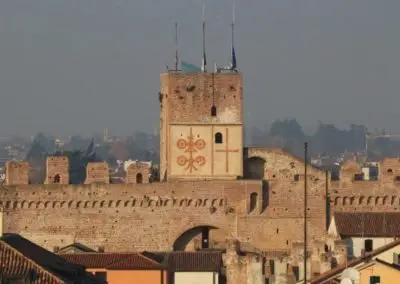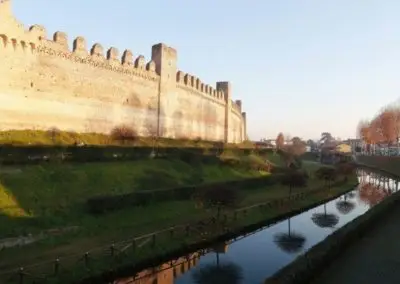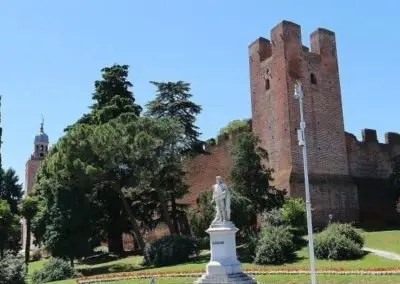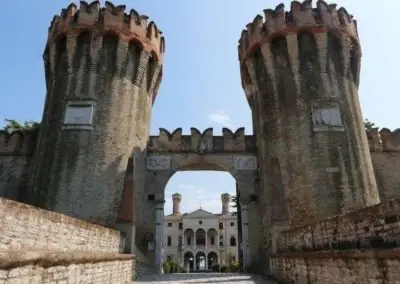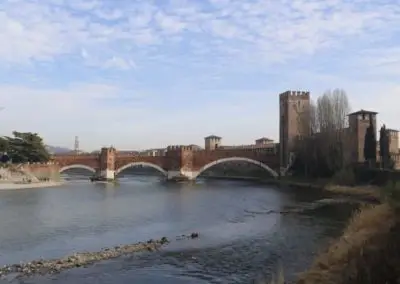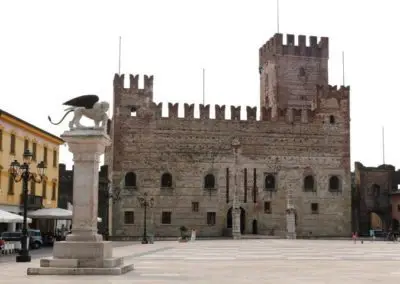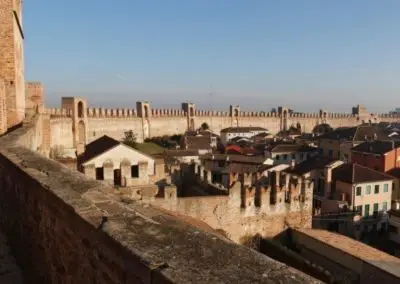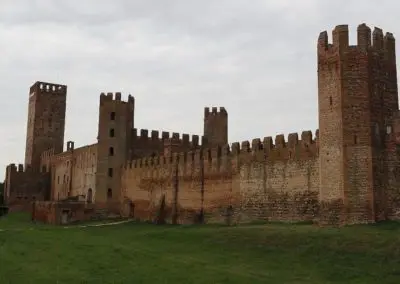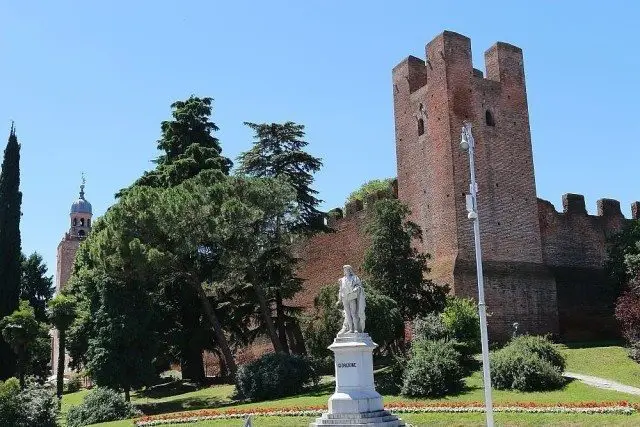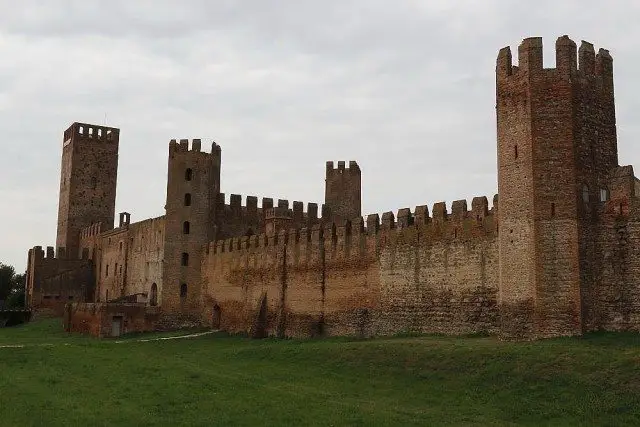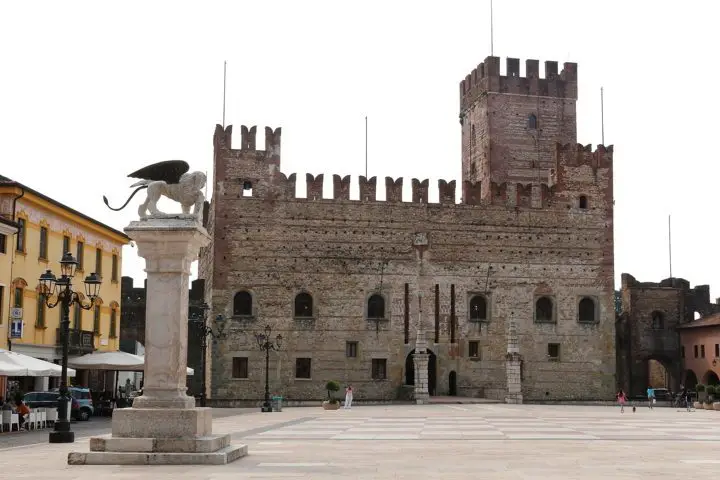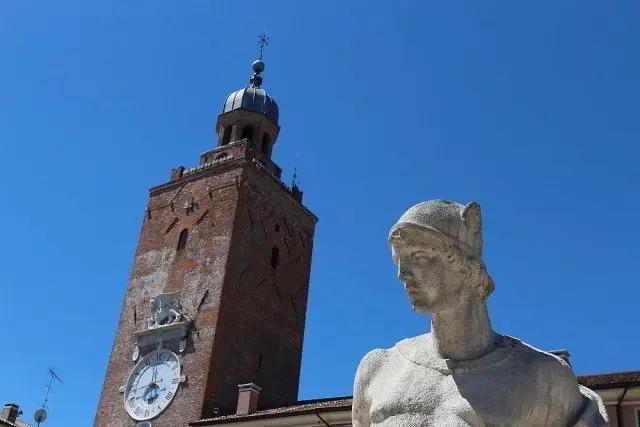
Bishops and Seigneuries, abbeys and castles
The Hungarian invasions
Seigneuries and castles, their birth. In the Veneto region, the Hungarian invasions of the Xth century caused the reconstruction of the defensive walls of the villages favoring the birth of numerous castles in the territory. These fortified centers originated for the defense of the rural populations become a control and exploitation system by seigneuries. Furthermore the cities were the seat of the bishop with a weak public authority, a condition that generate the birth of new centers of religious and military power.
The power of the sacred and the profane
Great abbeys became the centers of the agriculture recaptures, and many castles turned into centers of autonomous jurisdictions as the fortifications hastily built in the Xth century to defend themselves by the Hungarian invasions. Even an ancient Roman center as Este was militarized, a town that became the basis of the feudal and noble fortunes of the family that will create a small but vital state to the south of the region: located in the town of Ferrara, the Este family will control the Polesine area until 1395.
The transformation
As a result, this is a period of a great flowering of the social and culture life. Most of all in 1222 we have the foundation of the University of Padua. During the same period, throughout the mainland the free communes start to be transformed into powerful seigneuries that were fighting each other for the land hegemony.
The domination of the Seigneuries
From 1230 to 1260, we find the domination of the most representatives Seigneuries, Lords that have moved into the cities where they maintained possession of the countship from which their name derived. As a result, the names like da Romano, da Camino, da Carrara and Este will be part of the Middle Ages of this region.
Seigneuries as guarantors of the wellness
These were families with a longstanding military tradition and an aristocratic culture, a condition that was at the base of a considerable charm in the eyes of the bourgeoisie. And also the heads of these important families were as guarantors of the order, the safety and the power of the town. As a result, these lords had the posts of Podestà (governor), as well as Capitanio del Popolo (Captain of the People), on which the new power structure was based.
The Scaligers of Verona
The first to emerge was the lordship of Romano d’Ezzelino that conquered part of the center and the north of the Veneto, where Treviso fell into the hands of the Lords Da Camino. In the town of Verona, between 1260 and 1277, the lords Della Scala (also known as the Scaligers) established themselves as allies of the middle class of merchants and craftsmen against the more important citizens. During their domain, Verona became the capital of a powerful state which at its peak crossed the Apennines, reaching up to Lucca.
The power of the Seigneuries was slow to come to Padua that was a town with a large commercial center and a prestigious university. In 1318, due for the threat of the Scaligers, Jacopo da Carrara was elected as Capitano Generale.
A new town in the north of the Adriatic sea
In this important time of our history, we have the birth of an area located in the lagoon on the north of the Adriatic sea that will change the physiognomy of this region. As we know, during the barbarians invasions between the VIIth and the Xth centuries, the inhabitants of the mainlands moved on some islands of the lagoon facing the town of Altino that was a strategic site during the Roman Empire.
Venice
It is just around this period that a new town will settle. At the beginning its name was Rialto but from the XIIth century, this town built on the water got the name of the Roman Augustan region: Venetia (Venice).
Seigneury age in the Veneto region today
Today, we can retrace the Middle Ages of the Veneto region thanks to different castles and medieval walled towns that show their power till our days. In our “Suggested tours” page, you find 3 different day tours with local guide. In this article, I will report just a few of them, some tips to implement on spot. An exciting way to discover this magic world.
Marostica and the chess game with alive people
The town of Marostica is one of the most important sites of the Middle Ages in the Veneto. It takes the appearance of a fortified town thanks to the Scaligers lords of Verona. Hence in Marostica, we find two castles: the upper castle on the top of the hill that nowadays it is just a ruin, and the lower castle that is in perfect condition. Both are linked by a medieval wall subjected to important restorations during this last twenty years.
But most relevant, just in front of the lower Castle, there is the Chess square where, since 1954, they perform a chess challenge with alive people. An event where the participants play with the costumes of the Renaissance that it is held once every two even years, in the first week of September.
Monselice in the South of the Euganean hills
Monselice is a fortified site from the Lombards period, founded in the south Euganean hills area. It became a commune in the Middle Ages under the rules of Ezzelino which improves also the defensive walls system. Hence from 1327 Monselice became a domain of the Carraresi lords of Padua until 1405 when it passes to the Republic of Venice.
Cittadella and the Carraresi Lords of Padua
Cittadella is another well preserved town of the Middle Ages built by the Carraresi lords of Padua in the years 1220-21. They create their military and administrative strategic center in this town where founded at the intersection of two important roads. The first road is the one that connects Padua to Bassano from south to north, and the second one is the directrix from Treviso to Vicenza that goes from east to west, a road that was part of the larger system of the Roman Via Postojna. As a result, this strategic location was the strength of Cittadella.
Castelfranco Veneto, the Middle Ages, and the Renaissance
The town of Castelfranco Veneto welcomes you with its clock tower and with its two entrance gates surrounded by crenelated walls. Today, it continues to preserve the colors and the fragrances of an ancient history. The center of the castle is a little jewel, with its diverse styles of architecture; from those with a stamp from the middle Ages to edifices with a matrix of the XVIIIth century.
The Medieval walled town of Montagnana
Montagnana has a well preserved walls of the Middle Ages which surround the historic center for almost 2 km. Therefore, in the Xth century, they built a first small fort in order to protect the town. And then it became the feudal center of the Marchesi D’Este. Hence in the XIIth century, various battles were fought in this area between the troops of Ezzelino III da Romano and the Guelph faction led by the Este Family. At the end, Ezzelino with his troops conquers the town and rebuilds the fort where he adds the Mastio that is the most ancient and higher tower of Montagnana. In the XIVth century, Montagnana passed under the control of the Carraresi lords of Padua that will add to the town new surrounding walls.
The Castelvecchio in the town of Verona
In the Middle Ages Verona becomes one of the most important cities thanks to the Scaligers seigneury. And the Castelvecchio (Old Castle), where now we find the museum of the city, was the residence of the Lords.
Asolo
Asolo is a site known as with a hundred horizons. This medieval walled town presides over a grouped range of about thirty gentle hills located along the Prealp foothills. Beautiful palaces with frescoes embellish narrow streets, were small shops and bistro follow one to the other along the porticoes. A castle that was the residence of the queen Cornaro stands in the main square of this picturesque medieval town.
Below, just a few of hundreds of Medieval castles and sites that are in the Veneto region.
Medieval castles and fortresses in the Veneto region
There are more than 100 castles and fortresses of the Middle Ages in this region. Just below you will find a map with some of them.

